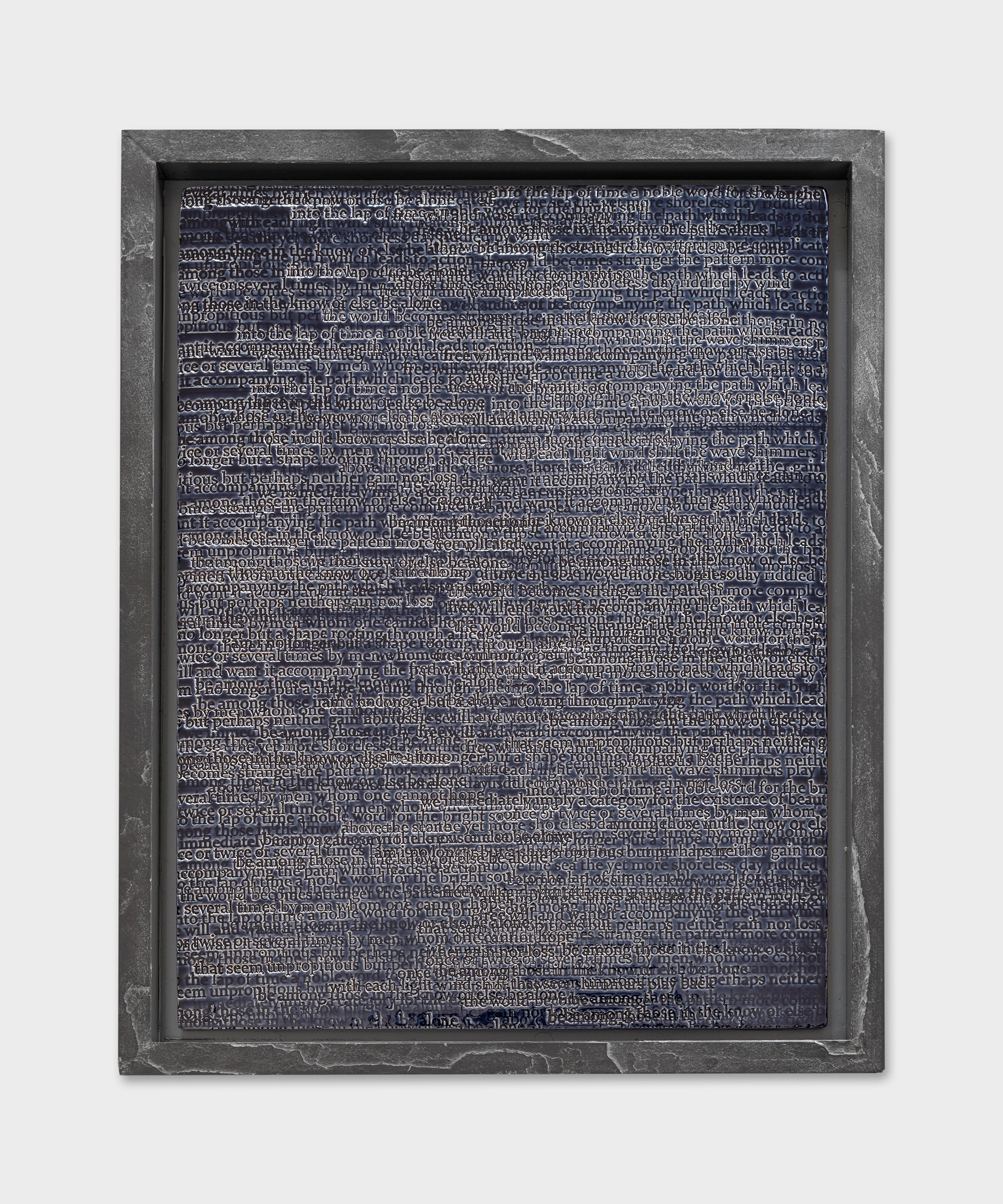
A Mingling State of Mind
Published by Editions Take5, Geneva, in 2018,under the editorial direction of Céline Fribourg.
Text by Siri Hustvedt,
Written in English, translated into French by Christine Leboeuf, into Urdu by Feizal Elaheebaccus and into braille by Fondation Valentin Haüy. With special thanks to Granta Magazine.
Five original signed photographs by Idris Khan,
Graphic Design by Karen Gliozzo-Schmutz and Hadrien Gliozzo
for Studio Nordsix, Lausanne,
Traycase designed by the editor and the artist,
crafted in slate and wood.
hosting a ceramic plate created by Idris Khan,
crafted by Idris Khan Studio.
Each of the thirty copies of the edition
is numbered and signed by the artists
Dimensions: 35 x 28 x 6,5 cm - Edition of 30 copies
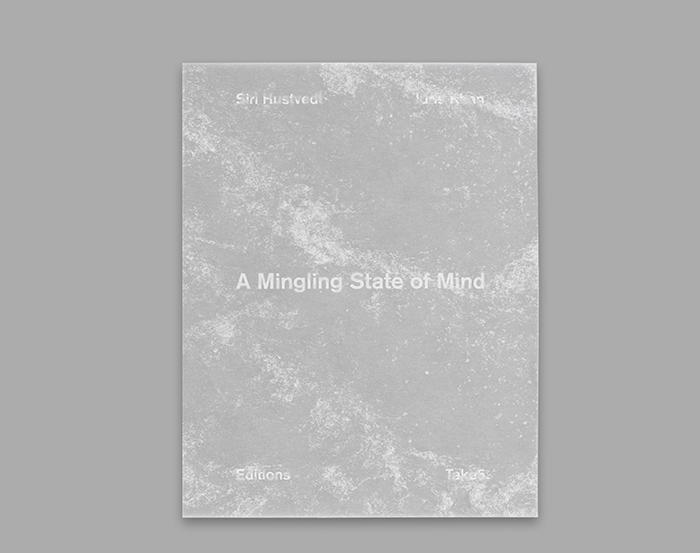
The book A Mingling State of Mind explores the ever changing and mysterious nature of the psyche. It searches for what cannot be seen, but only be felt. It opens a window on our spirit and our soul.
Siri Hustvedt’s insightful text questions our capacity to understand how our states of mind (defined as our emotional states) permanently keep shifting, and what constitutes them. The author, who in addition to write fiction also lectures in psychiatry at Weil Cornell Medical College, raises many issues : Is it possible to grasp one’s state of mind, our own or others’? How permeable are we to our thoughts, and to others’thoughts? Is it legitimate to say that “we know someone by heart”, or is it a total illusion? Is human connection on a deep level always possible? How can our perceptions, on a collective level, superpose and interact?
"Synesthesia (from Ancient Greek σύν syn, "together", and αἴσθησις aisthēsis, "sensation") is a neurological phenomenon in which stimulation of one sensory or cognitive pathway leads to automatic, involuntary experiences in a second sensory or cognitive pathway.” Reflecting on personal life experiences and psychological analysis, Siri Hustvedt shows how synesthesia is instrumental in allowing us to question the nature of perception.
Despite all our efforts to not atomize the word "experience" into its constituent sensations, we often come to the conclusion that experience is the sum of our psychophysical perceptions, past and present.
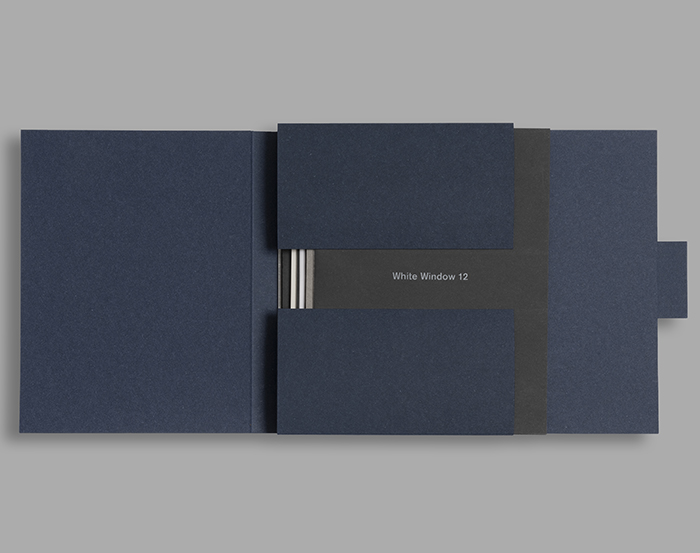
In this perspective, Idris Khan’s photographs “White Windows” akin more to intriguing charcoal drawings made in time than to snapshots. Their velvety texture, deep tones of blacks and dissolving curls rouse abstraction, repetition and spirituality. On a literal level, they represent random glass façades blurred with paint, but in this context they also evoke the realms of the human brain, as well as the complexity of human emotions. Through a visual dialectic game between opacity and reflection, they scramble the tracks, capture and freeze time. By revealing the very thin frontier between the impermanent and permanent, the obvious and the concealed (secret) the artist transforms a moment into meaning.
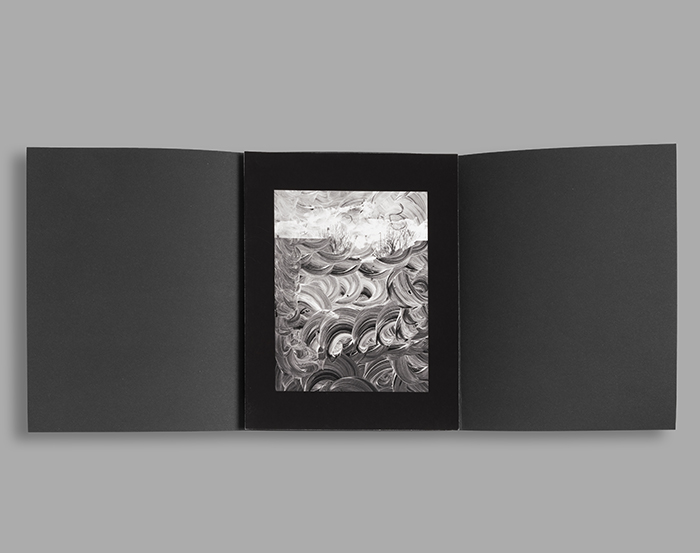
By framing and enhancing the beauty of something that could otherwise be perceived as incoherent, formless or worthless, Idris Khan invites us to witness the intertwining of absence and presence.
Like Rorschach’s s ink stains, these images invite us to an introspective reverie: To what extent does the viewer’s involvement creates an object? What has come before him, and what will persist after him? To what extent are we able to witness not what is seen, but what is experienced by others, without even knowing by whom it has been viewed? In this perspective where perceptions melt, individuality and time seem to disappear.
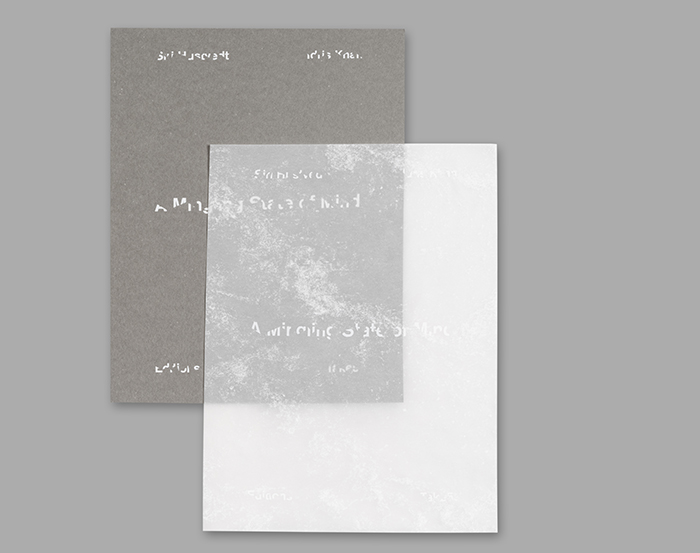
This book, by placing the images in a multi-sensorial and multicultural perspective, borrows a Duchampian point of view to reach out to an abstract, a universal vision of human perception. According to the post modern idea that we’re made of languages, we’re not one person, we take on traits from other people (very present in Deleuze or Guattari’s works (A Thousand Plateaus), our identities can shift over time, and nothing is set.
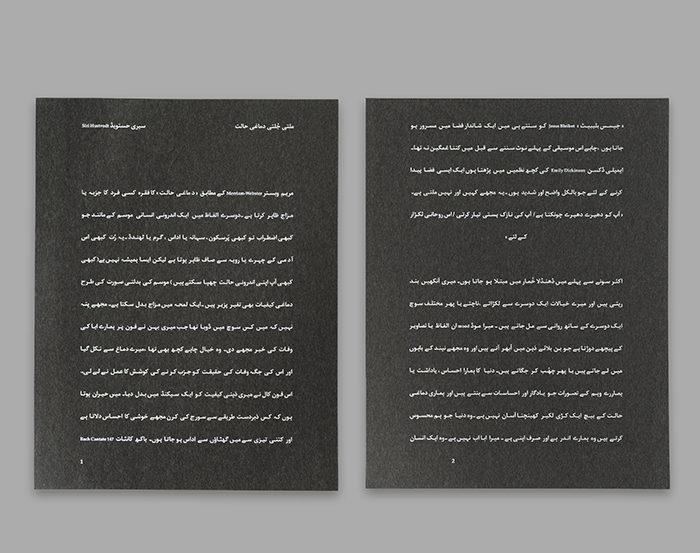
For this reason, Siri Hustvedt’s text has been translated into Urdu, one of the artist’s mother tongues, as well as into French, and Braille.
The graphic designers Studio Nordsix have rendered this complex sensorial experience throughout the graphic design. Different kinds of papers, mostly Japanese, seem to offer infinite nuances of greys and whites, as well as a variety of textures, referring to the multiplicity of our states of mind.
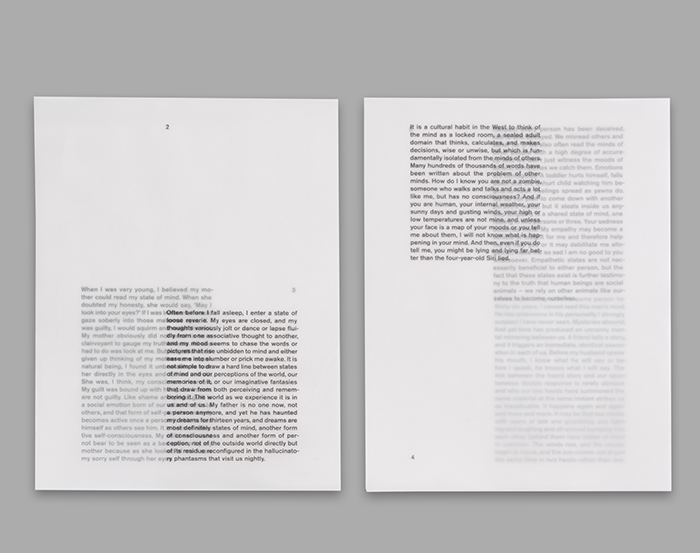
The English version of the text plays with the transparency of paper and superposition, by moving paragraphs over the course of the successive pages to symbolize the synchronization of moods. The Urdu version has been printed in a white serigraphy on a dark grey paper that has the appearance of cashmere, graphically working on the line, extending across the pages. Finally, there is a last sequence uniting the French and Braille translations. Studio Nordsix invented this typeface (originally drawn by hand) that superimposes braille and our alphabet so that both languages can be readable at the same time, on the same page. It is printed in offset and varnish, to convey the tactile dimension of the braille. All these versions of the text correspond to different human perspectives, which somehow interconnect.
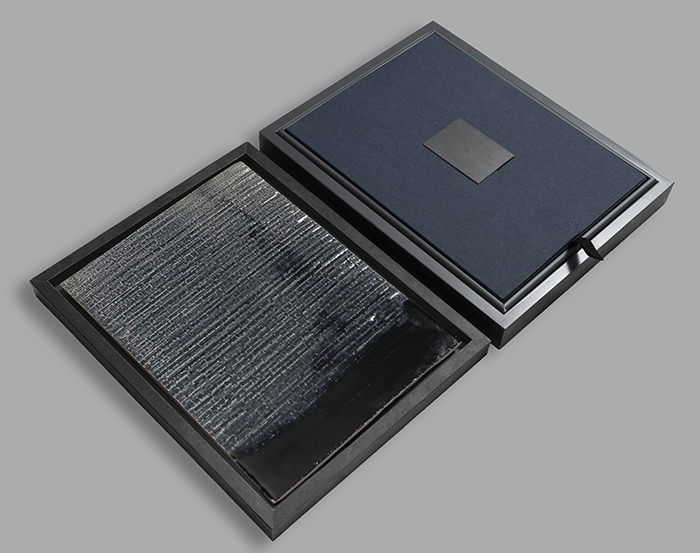
The tray case of the book, made out of slate, appears as a mineral codex. It is enriched with a mysterious “aquatic” ceramic tablet, which evokes the surface of water. As we try to catch our image in this reflecting plate, we detect letters rippling on its surface, as if a hidden message was to be deciphered. They are remnants of the artist’s writings, reflecting on life, loss, and time, reminding us of the importance of language, mingling our many different states of mind.
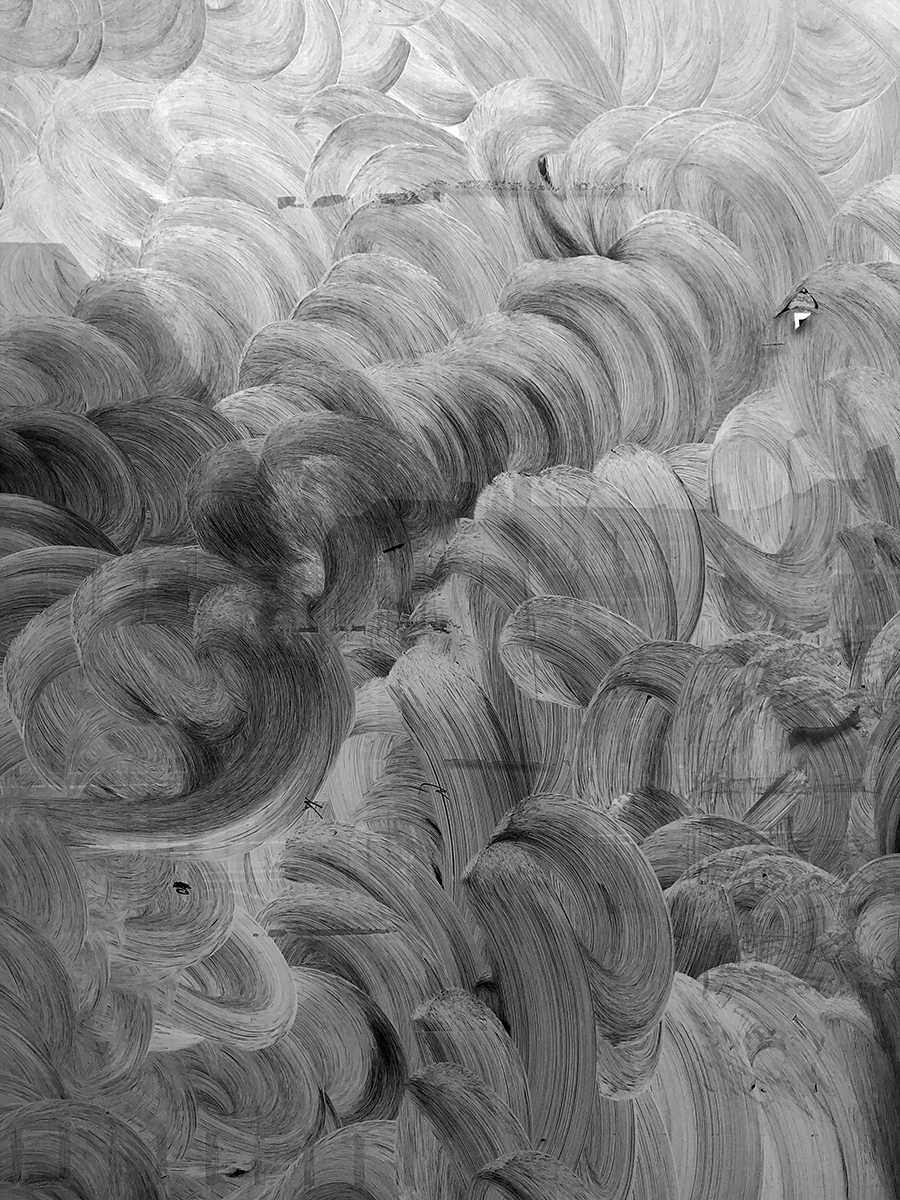
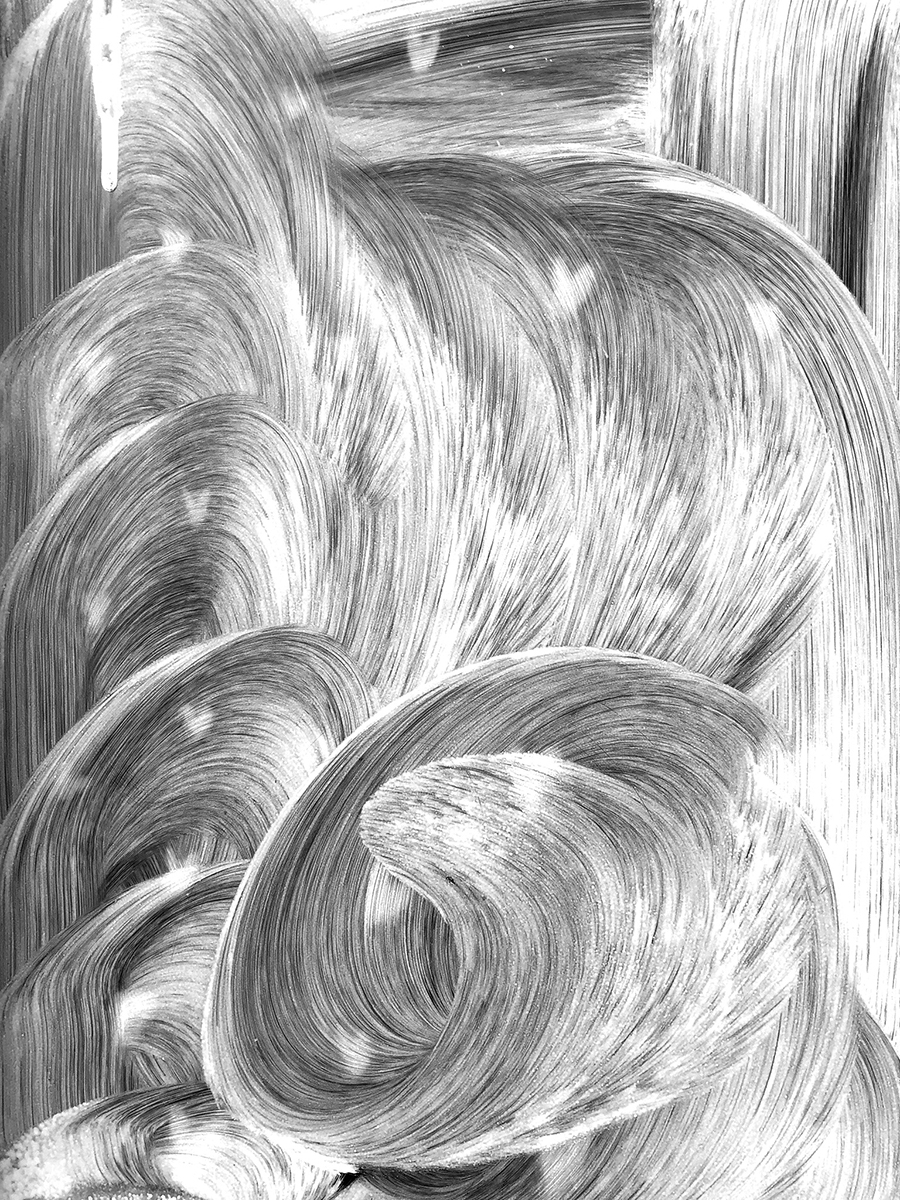
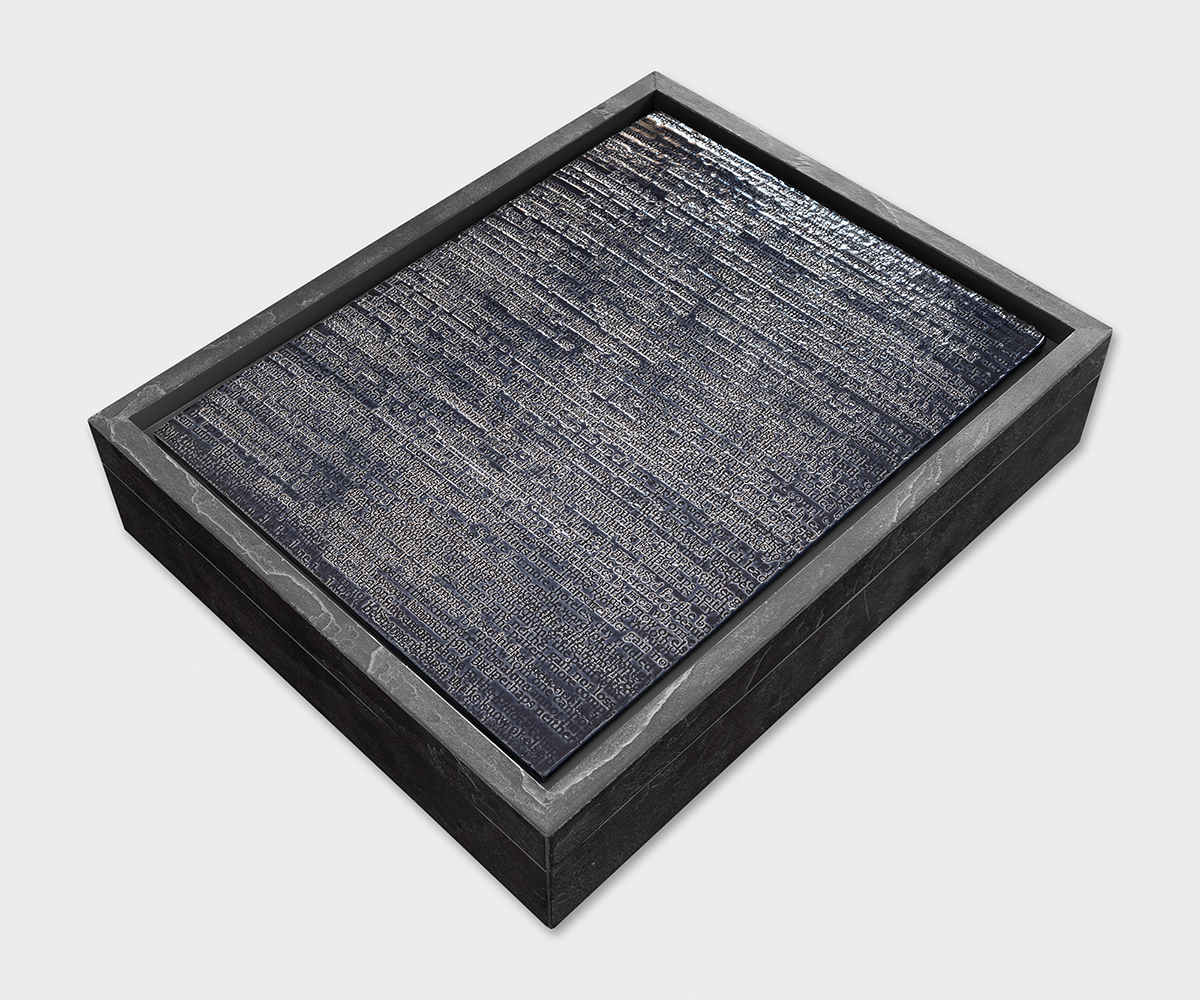
 FR
FR